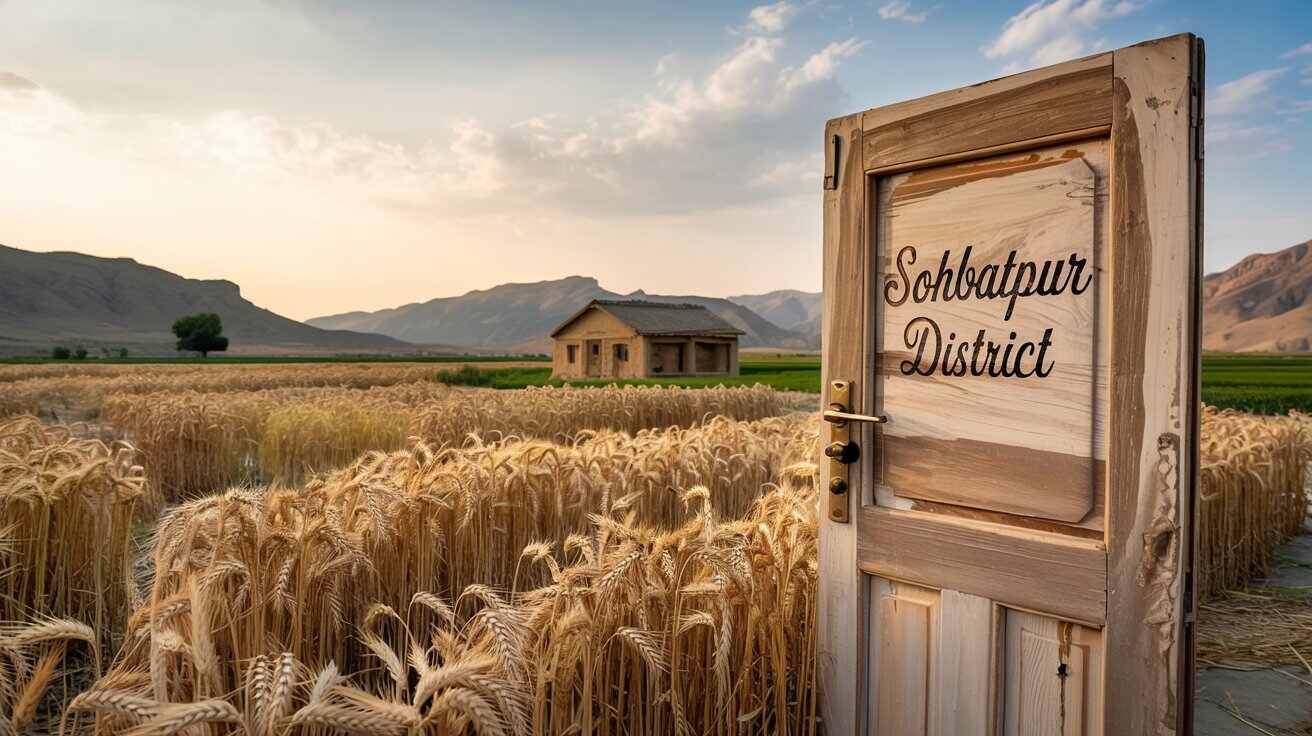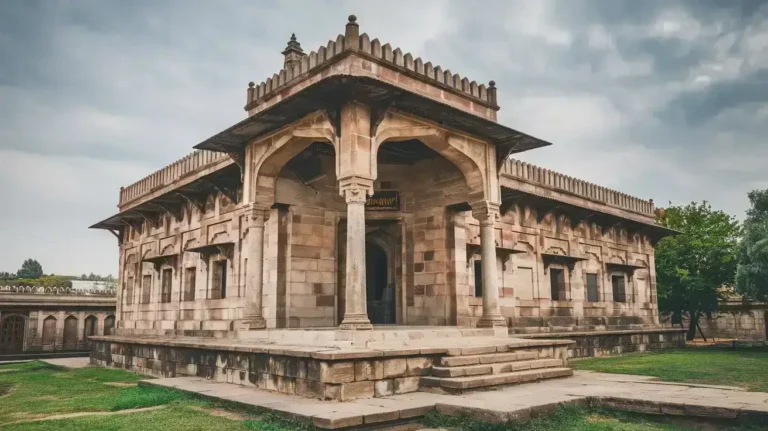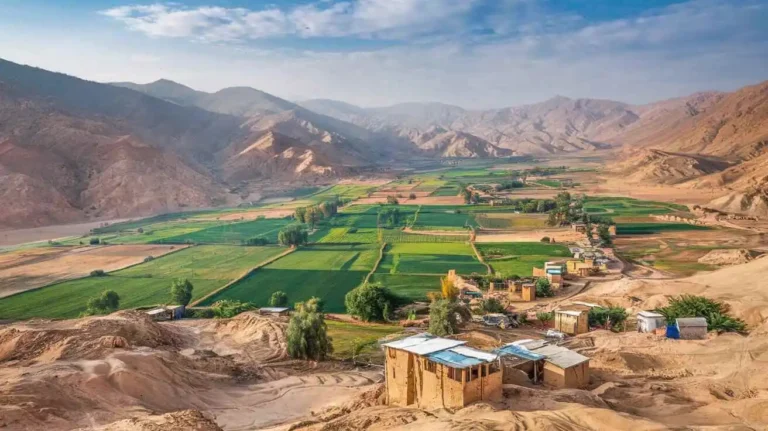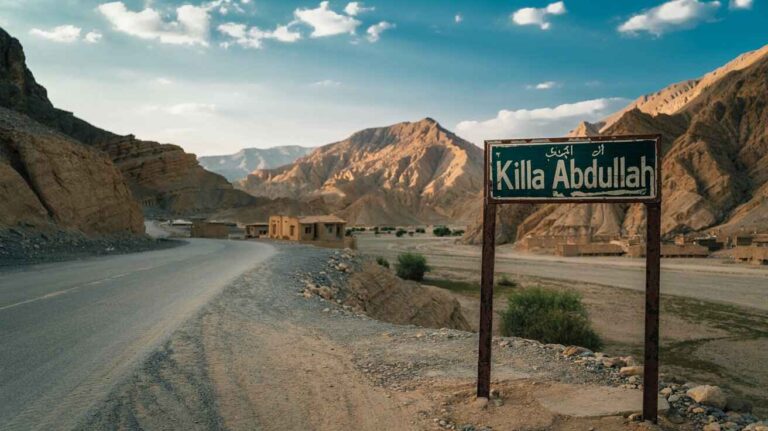Sohbatpur District: A Comprehensive Overview
Sohbatpur
Sohbatpur District, situated in the northeastern region of Balochistan, Pakistan, is a land of cultural depth, agricultural importance, and historical relevance. Since its establishment in May 2013, the district has gradually gained administrative recognition and is on a steady path toward development. With its fertile plains and strong traditional values, Sohbatpur has the potential to emerge as a model district in the province.
The district’s strategic location, bordering both Balochistan and Sindh, has contributed to its unique cultural and linguistic blend. Its establishment aimed to bring governance closer to the people, improve service delivery, and create opportunities for better infrastructure. Though it is relatively young compared to other districts, Sohbatpur has been a focal point of attention for policymakers, NGOs, and local communities striving for progress.
Over the past decade, Sohbatpur has seen significant developments in education, agriculture, and local governance. However, the district still faces various challenges in healthcare, infrastructure, and literacy, which need long-term strategies and focused investments. This comprehensive overview explores all facets of life in the district, from history and culture to economy and education.
Geography and Location
Sohbatpur District covers an area of approximately 802 square kilometers and is geographically positioned in the Kacchi Plain, which is part of the larger Indus Plain. This terrain provides excellent conditions for agriculture due to its fertile soil and availability of irrigation water. The land is flat, with minor undulations, making it suitable for farming and rural settlements.
The district is surrounded by a combination of districts from Balochistan and Sindh provinces. To the west, it borders Naseerabad and Jafarabad, while Dera Bugti lies to the southwest. On the eastern side, it shares borders with Jacobabad and Kashmore districts of Sindh. This proximity to Sindh allows the district to benefit from inter-provincial trade and cultural exchange.
Despite its small size compared to other districts in Balochistan, Sohbatpur holds significant geographical importance due to its location near major irrigation networks like the Guddu Barrage and Sukkur Barrage. Seasonal streams from the Sulaiman Range also provide water during monsoons, playing a critical role in sustaining agriculture and livestock.
Administrative Divisions
The administrative setup of Sohbatpur District includes three main tehsils: Sohbatpur, Faridabad, and Sanhri. These tehsils serve as sub-divisional units for governance and public service delivery. Among them, Sohbatpur Tehsil is the largest and houses the district headquarters and most government offices.
Faridabad Tehsil is known for its strong agricultural base and is home to several small towns and villages. The tehsil has been the focus of many agricultural extension programs due to its fertile land and irrigation access. Sanhri Tehsil, on the other hand, includes a cluster of important areas such as Hair Din, Manjhipur, Panhwar, and Saeed Muhammad Kanrani. These regions are not only agriculturally rich but also culturally vibrant.
Each tehsil is further divided into Union Councils, which are the basic units of local governance. These councils play a vital role in delivering municipal services, registering complaints, and coordinating community development projects. The administrative divisions help bring governance closer to the people and ensure that the unique needs of each area are addressed effectively.
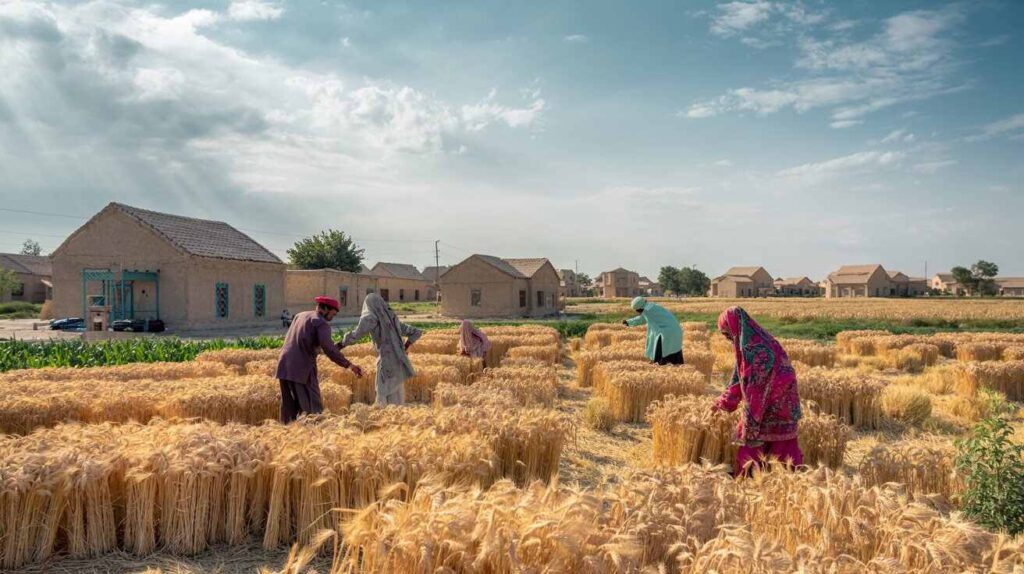
Demographics
According to the 2023 census, the population of Sohbatpur District stands at approximately 240,106 individuals. A significant majority of the population, around 225,378, resides in rural areas, while only 14,728 people live in urban centers. This distribution highlights the district’s deeply rural character, with agriculture being the dominant way of life.
The gender composition in the district is fairly balanced, with 121,863 males and 118,241 females. However, in terms of access to resources, education, and healthcare, women often face greater challenges, especially in remote areas. Addressing this gender disparity requires focused government and NGO interventions to empower women and ensure equality.
Literacy Rate
The literacy rate in Sohbatpur District is a cause for concern, with an overall literacy of only 41.02%. While this represents a slight improvement over the past decade, it still lags far behind national averages. Male literacy is recorded at 53.26%, while female literacy is significantly lower at 28.42%. This gap reflects both social and infrastructural barriers to education.
Several factors contribute to the low literacy rates, including lack of access to quality schools, poverty, and traditional norms that often restrict girls’ education. In rural areas, many families prioritize farm work or household responsibilities over formal schooling, especially for girls. Government initiatives and awareness campaigns are trying to shift this mindset, but progress is gradual.
In recent years, private educational institutions have started operating in the district, offering better teaching standards and facilities. However, affordability remains an issue for many families. The district requires well-structured public education policies, investment in teacher training, and gender-inclusive education models to boost literacy levels.
Languages
The linguistic landscape of Sohbatpur is diverse and reflects its multi-ethnic and inter-provincial identity. The most widely spoken language is Balochi, spoken by 76.33% of the population. This language is deeply embedded in the local culture, and most tribal communication, folklore, and traditional songs are in Balochi.
Sindhi is the second most spoken language, accounting for 12.55% of the population. This is largely due to the district’s proximity to Sindh and the presence of Sindhi-speaking tribes. Brahui, another important regional language, is spoken by 6.75%, while Saraiki is spoken by 3.52%. A small percentage, 0.85%, speaks other languages, including Urdu and Punjabi.
Multilingualism is common in Sohbatpur, and many residents are fluent in more than one language. This linguistic diversity plays a positive role in promoting inter-tribal harmony and cultural richness. Schools often use Balochi or Sindhi as mediums of informal instruction, but formal education is typically delivered in Urdu and English.
Religion
Sohbatpur District is overwhelmingly populated by Muslims, who constitute approximately 99.26% of the total population. The majority belong to the Sunni sect, with a smaller representation of Shia Muslims, who coexist peacefully within the same communities. Religion deeply influences daily life, with mosques serving not just as places of worship but also as community centers where social and educational matters are often discussed. Friday congregational prayers are significant weekly events, while Eid celebrations are observed with great enthusiasm across urban and rural areas.
Despite the dominant presence of Muslims, Hindus, accounting for 0.68% of the population, have a long-standing presence in the region. Many Hindu families are engaged in local trade, shopkeeping, and traditional crafts. Temples like the Shiv Mandir in the town area cater to their religious needs. While small in number, the Hindu community in Sohbatpur is known for its cultural contributions, especially during festivals such as Diwali and Holi, which are celebrated with color and music in a few localities.
The remaining 0.06% fall under the category of Others, which includes Christians, Sikhs, and people with indigenous spiritual beliefs. Most of these individuals are engaged in public service, education, and healthcare sectors. Though limited in number, their religious practices are respected, and special arrangements are made during major events like Christmas or Baisakhi. There are a few churches and gurdwaras established through private or NGO support, and they continue to serve their small but significant congregations.
Historically, Sohbatpur has exhibited a high degree of religious tolerance and coexistence, distinguishing it from more conflict-prone regions. The local tribal elders and feudal landlords often play an informal but powerful role in promoting interfaith harmony, ensuring that minority communities feel protected. Schools generally promote inclusive education, and NGOs occasionally conduct interfaith dialogue programs. This social fabric of tolerance has allowed various communities to live side-by-side peacefully, reinforcing Sohbatpur’s image as a culturally respectful and harmonious district.
Tribes and Communities
Sohbatpur District is home to a diverse mix of tribes and ethnic groups that significantly shape its social, political, and economic landscape. Among the dominant tribes are the Gola, Bugti, Rind, Jamali, Khoso, Chandio, Leghari, and other Baloch sub-tribes. Each tribe maintains a strong internal structure led by a Sardar or tribal chief, whose influence extends beyond family matters into regional politics and conflict resolution. These tribes have deep historical roots in the region and continue to play a decisive role in the identity and governance of Sohbatpur.
The Gola tribe is known for its traditional leadership and cultural presence in central Sohbatpur. The Bugti tribe, often associated with Dera Bugti, has families that have migrated and settled in various parts of Sohbatpur. The Rind and Jamali tribes are agriculturally inclined and own vast tracts of land, using their resources to wield political influence. The Khoso and Chandio tribes are known for their engagement in public administration, while the Leghari maintain a presence in tribal mediation and land ownership. These affiliations often define local alliances, marriage practices, and even voting patterns.
Tribal identity remains a vital part of daily life, dictating customary law (Riwayat), inheritance, dispute resolution, and community responsibilities. Issues such as land conflicts, marriage disputes, and political disagreements are often resolved by Jirgas, or tribal councils, where elders from each tribe convene to pass judgment. These informal systems work parallel to formal legal structures and are generally accepted by local communities, especially in rural areas. The role of elders is seen as sacred, and their decisions are rarely challenged publicly.
Despite some inter-tribal rivalries, there is a shared understanding among these groups, rooted in their Baloch cultural heritage. Festivals, religious events, and local gatherings often bring members of different tribes together, encouraging cooperation and mutual respect. In recent years, youth from these tribes have started engaging in education, sports, and local activism, hinting at a gradual evolution in tribal roles while maintaining their traditional identity. The tribal mosaic of Sohbatpur is thus both a source of strength and complexity, balancing age-old customs with emerging modern dynamics.
Economy and Agriculture
Agriculture is the lifeblood of Sohbatpur’s economy, thanks to its location in the Green Belt of Balochistan. The region benefits from canal irrigation, which makes it more fertile compared to other parts of the province. The primary crops include wheat, cotton, sugarcane, rice, and various vegetables such as onions, tomatoes, and chilies. Wheat serves as the staple food, while cotton and sugarcane are major cash crops, contributing to trade and local industry. The fertile land and favorable climate make multiple crop cycles possible in a year.
The irrigation system in Sohbatpur is supported by major water channels such as the Pat Feeder Canal, Kirthar Canal, and the Desert Pat Feeder Sub-System. These canals draw water from the Guddu and Sukkur Barrages, which are vital for maintaining year-round cultivation. However, issues like seasonal flooding, water theft, and waterlogging often disrupt farming activities. The 2010 and 2022 floods severely damaged crops, prompting the need for better water management and canal maintenance strategies.
Livestock farming is another critical component of the rural economy. Households raise cattle, goats, sheep, and buffaloes, which provide milk, meat, and leather. These products are consumed locally and sold in neighboring districts like Naseerabad, Dera Allah Yar, and Jacobabad. Livestock also plays a ceremonial role, especially during religious festivals like Eid-ul-Adha, and in dowry arrangements and tribal settlements. Women are often responsible for caring for animals, making livestock a source of female employment in rural homes.
Since 2020, organizations like the Institute for Development Studies and Practices (IDSP) have introduced organic farming practices to combat soil degradation and reliance on chemical fertilizers. Farmers are being trained in compost making, natural pest repellents, and seed saving techniques, which not only improve yields but also reduce environmental harm. This shift toward sustainable agriculture has received positive feedback, especially among small farmers looking to reduce costs. With proper support, organic farming could become a model for climate-smart agriculture in the region.
Education
Education in Sohbatpur is gradually expanding but remains underdeveloped, particularly in rural and tribal areas. The overall literacy rate stands at 41.02%, with a sharp gender divide: 53.26% for males and only 28.42% for females. Most children attend government primary schools, but dropouts are common after the middle school level due to poverty, lack of infrastructure, and social constraints, especially for girls. Education is often deprioritized in favor of farm work, household duties, or early marriages.
Prominent educational institutions in the district include the Government Degree College Sohbatpur and the Government Girls Inter College Sohbatpur. A few private schools like Al-Suffah Academy and Iqra Public School offer slightly better facilities and English-medium instruction, attracting students from middle-income families. However, there are still limited opportunities for higher education, and most students seeking university-level degrees must travel to Quetta, Sibi, or Larkana.
Numerous challenges plague the educational sector. There is a shortage of qualified teachers, particularly in science and mathematics, and many schools lack libraries, laboratories, and even basic furniture. In remote areas, the absence of girls’ schools further exacerbates gender inequality. Transportation issues and security concerns discourage families from sending their daughters to school. The Board of Intermediate and Secondary Education (BISE) often faces delays in exam results and staff deployment, leading to academic frustration.
Healthcare
Healthcare services in Sohbatpur District are inadequate and struggle to meet the needs of the local population. The district has a District Headquarters Hospital (DHQ Sohbatpur) and several Basic Health Units (BHUs) and Rural Health Centers (RHCs) in union councils such as Faridabad, Manjhipur, and Hairdin. Despite this, the majority of the population lacks access to quality medical care, particularly in remote areas. The shortage of specialist doctors, paramedics, and female medical staff further exacerbates the health crisis, especially for women and children.
Many health facilities operate with limited supplies of medicines, equipment, and ambulances. Pregnant women often face difficulties in receiving maternal care, and the absence of gynecologists in rural centers means many must travel to Jacobabad or Sibi for safe deliveries. Childhood diseases like measles, malaria, and diarrhea are common due to lack of vaccination programs and clean drinking water. The Expanded Programme on Immunization (EPI) is operational but faces issues of poor outreach and irregular staffing.
The situation was further worsened by the floods of 2022, which damaged healthcare infrastructure and led to outbreaks of waterborne diseases. Relief organizations like Médecins Sans Frontières (MSF) and Pakistan Red Crescent provided temporary mobile clinics, but long-term solutions remain elusive. The district administration has requested support from the Balochistan Health Department and federal authorities, but the response has been slow and inconsistent.
To improve healthcare, local NGOs and public health programs are introducing community health workers, telemedicine pilots, and mobile health units. The Lady Health Worker (LHW) program, though active, is hampered by low retention and poor mobility due to security and cultural challenges. There is a growing recognition that healthcare must be integrated with education, water, and sanitation efforts to be effective. Investment in healthcare infrastructure and workforce training is critical for the wellbeing of the people of Sohbatpur.
Infrastructure
The infrastructure of Sohbatpur District is in a developing stage, with mixed progress across urban and rural areas. The main city, Sohbatpur, is connected by metaled roads to nearby towns such as Dera Allah Yar, Usta Muhammad, and Jacobabad. However, the interior villages suffer from poor road connectivity, especially during the monsoon season, when unpaved roads become mud tracks. This affects the transportation of agriculture goods, students, and patients to urban centers.
Electricity supply in the district is highly irregular. Frequent load shedding, low voltage, and damaged transformers are common complaints. The district receives power through SEPCO (Sukkur Electric Power Company), but outdated infrastructure and power theft result in unstable supply. Several villages remain off-grid, relying on solar panels or generators for limited energy use. This affects household activities and restricts small industries like flour mills, ice factories, and cold storages.
In terms of housing, most rural residents live in mud or brick houses, often with limited protection against extreme weather. The 2022 floods caused widespread damage, displacing hundreds and destroying livestock shelters, grain storages, and boundary walls. Reconstruction efforts have been slow due to lack of funds and bureaucratic delays. The district lacks public housing schemes, and only a few people benefit from Benazir Income Support Program (BISP) or Ehsaas housing grants.
Infrastructure development is being promoted through local government funds and projects under Balochistan Development Package. Road rehabilitation, small bridge construction, and school building renovations are in progress. However, corruption, lack of monitoring, and low contractor capacity hinder timely completion. For Sohbatpur to prosper, long-term infrastructure planning with community involvement and transparent governance is essential.
Communication
The communication system in Sohbatpur has improved marginally in recent years, but challenges remain in ensuring reliable and inclusive access. The main telecom providers such as Jazz, Zong, and Telenor offer mobile phone services in urban and semi-urban areas. However, signal strength fluctuates in far-flung union councils like Manjhipur, Hairdin, and Faridabad, causing disruptions in connectivity. Many students and freelancers complain about poor internet quality, which affects online education and remote work opportunities.
PTCL landline and broadband internet services are available in Sohbatpur city but not in rural areas. The introduction of 4G towers in 2023 has slightly improved connectivity in some union councils, but frequent network outages and power breakdowns continue to hinder progress. There are no public internet cafes or IT centers, limiting digital exposure for youth. Access to digital banking, e-learning platforms, and e-governance portals remains minimal.
The local press operates at a very small scale, with no major newspapers published from Sohbatpur. Residents rely on national dailies from Quetta and Karachi or TV news channels such as Geo, ARY, and PTV. A few local WhatsApp groups and Facebook pages share community news, lost items, and job announcements, reflecting a gradual digital shift. However, misinformation and fake news are also concerns due to lack of media literacy.
Efforts are being made by civil society organizations and youth groups to introduce digital literacy workshops and communication awareness. Projects like Digital Sohbatpur Initiative, if supported by government and NGOs, could bridge the urban-rural communication gap. Equipping schools with computers, smartboards, and internet labs would open up new opportunities. Enhancing communication is not just about connectivity but about empowering people with information.
Water Supply and Sanitation
Access to clean drinking water is a persistent problem in Sohbatpur, particularly in rural settlements. The district depends heavily on canal water, bore wells, and hand pumps, many of which are contaminated or non-functional. A 2019 survey by the Public Health Engineering Department (PHED) found that more than 60% of water sources were unfit for drinking due to bacterial and arsenic contamination. This has led to outbreaks of hepatitis, typhoid, and diarrhea, especially among children.
Most rural areas lack proper water filtration plants or chlorination systems. Women and children often walk several kilometers to fetch water from distant hand pumps or canal outlets, wasting hours that could be used for education or work. The urban population of Sohbatpur city fares slightly better due to motor pumps and private filtration units, but even these are affected by load shedding and poor maintenance. During summer, water scarcity becomes a major issue, resulting in conflicts between communities.
Sanitation is equally neglected. The majority of homes in rural Sohbatpur use open defecation or pit latrines, and there is no formal sewerage system. Solid waste is dumped in open fields or along canal banks, causing blockages and mosquito breeding grounds. Drainage systems in the main town are outdated, with frequent sewage overflows during rainfall. Flooding worsens these conditions, spreading filth and disease in affected areas.
NGOs like WaterAid, UNICEF, and BRSP have implemented small-scale WASH (Water, Sanitation, and Hygiene) projects in selected schools and health centers, promoting toilet construction and handwashing stations. Yet, sustainable impact requires government-led planning, budget allocation, and community mobilization. A focus on low-cost, culturally appropriate sanitation solutions and solar-powered water pumps could provide a model for transforming public health in Sohbatpur.
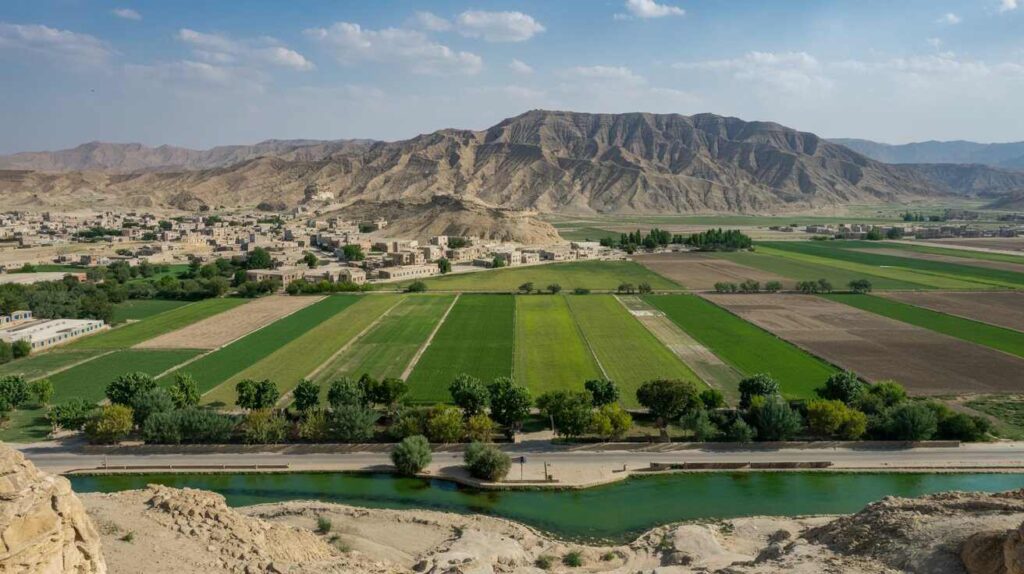
History
Sohbatpur was historically a part of the Kachhi region, which has been an important junction of civilizations due to its strategic location between Sindh and Balochistan. The area has seen the footprints of ancient cultures including the Mehrgarh civilization, and later came under the rule of Brahui, Baloch, and Kalhora dynasties. During the Mughal era, this region served as a passage for trade caravans and military expeditions. Its fertile plains and canal-fed agriculture made it a valuable zone for both Sindhi and Baloch rulers.
The modern town of Sohbatpur is believed to have been founded by Sardar Sohbat Khan Gola, a prominent leader of the Gola tribe, in the early 19th century. He established the area as a tribal stronghold, and it grew into a small commercial and agricultural center over time. The name Sohbatpur, meaning “the place of Sohbat,” reflects his influence and the tribal system that governed the social and political landscape of the area during that time. The Gola, Umrani, and Bugti tribes played a major role in shaping the district’s socio-political fabric.
Under British colonial rule, Sohbatpur was administered as part of the Jacobabad District within the Bombay Presidency. It later became part of Jafarabad District after the creation of Pakistan in 1947. The British introduced canal irrigation systems such as Pat Feeder and Kirthar canals, transforming the local economy. However, despite infrastructural developments, the area remained politically and economically marginalized. It was during the One Unit policy (1955–1970) that administrative restructuring started affecting the region’s tribal autonomy and governance patterns.
Sohbatpur was officially declared a separate district on May 31, 2013, during the tenure of Chief Minister Nawab Aslam Raisani, carved out from Jafarabad District to facilitate better governance and resource management. The creation of the new district included the establishment of Sohbatpur Tehsil as its headquarters, along with Manjhipur, Hairdin, and Faridabad as key union councils. This administrative decision was seen as a move to improve local governance and bring development to previously neglected areas.
Since its district status, Sohbatpur has witnessed some development in education, health, and infrastructure, although challenges persist. The 2022 floods were a major setback, affecting historical settlements and washing away much of the agricultural land that had sustained local communities for generations. Nonetheless, the people of Sohbatpur continue to preserve their tribal traditions, oral histories, and cultural values that trace back centuries. The district remains a testament to the resilience of its people and the rich historical tapestry that binds Sindh and Balochistan together.
The creation of Sohbatpur District was officially announced in May 2013 by the Government of Balochistan, as part of an effort to enhance local governance. Previously, it was a subdivision of Jafarabad District, and the decision to separate it was made to improve administrative efficiency. The goal was to provide focused development in the region by forming an independent district with its own resources, governance, and planning bodies.
The city of Sohbatpur, which now serves as the district headquarters, was named after Sardar Sakhi Sohbat Khan Gola, a respected tribal leader and landowner. He is credited with laying the foundation of the town and playing a crucial role in the early settlement and development of the area. His legacy continues to influence local traditions, especially in community decision-making and dispute resolution through jirgas (tribal councils).
Historically, the region has witnessed various migrations and settlements due to its fertile lands and proximity to Sindh. The local population consists of tribes that have lived in the area for generations, including Golas, Jamalis, and Chandios, among others. The formation of the district has given these communities a sense of identity and ownership, motivating them to actively participate in regional development.

